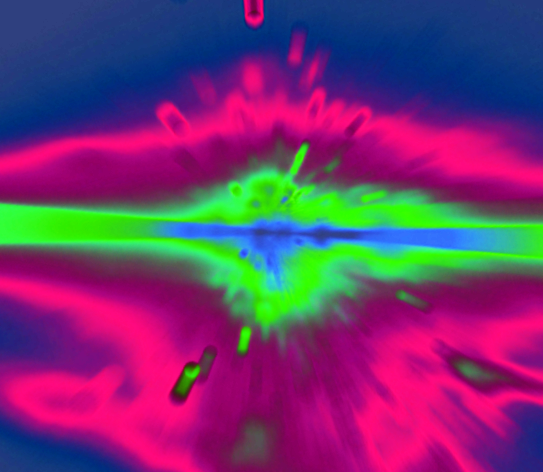Diamonds fire for guiding stars
 Australian researchers have developed an improved laser system that will help large optical telescopes gather more accurate data.
Australian researchers have developed an improved laser system that will help large optical telescopes gather more accurate data.
Large-diameter ground-based optical telescopes use artificial guide stars, which are created by laser beams in the higher levels of the atmosphere.
These artificial stars allow users to correct atmospheric aberrations of light passing to and from space, using adaptive optics. They are crucial for ground to earth communications, in space debris imaging and tracking, and for astronomy.
The principle involves using a precisely tuned laser to energise atoms in the sodium layer that occurs naturally in the mesosphere, at an altitude of around 90 km. These atoms re-emit the laser light, temporarily creating a glowing artificial star.
There are several technologies to do this, but generating that specific wavelength has been a notorious challenge.
Now, researchers from Macquarie University have shown that diamond Raman lasers are a highly efficient way to generate the precise output needed.
They have for the first time demonstrated a continuous-wave 589 nm diamond laser for guidestar applications.
Described in Optics Letters, the laser delivered higher power and efficiency than previous guide star laser systems of its type.
The diamond laser is in the class of lasers called Raman lasers and works by stimulated scattering rather than stimulated emission. The researchers have found that this core difference enables the laser to operate more stably on a pure single frequency.
While the new technique is already competitive with other approaches, the technology can be further developed to increase the quality of future guide stars.
Diamond can dissipate heat rapidly, and is less prone to unwanted optical distortions. This combination provides a pathway towards producing more powerful guide star beams. The researchers predict that its extra flexibilities, such as delivering the laser power as a series of microsecond optical pulses, will also be a benefit for adaptive optical systems.
The authors believe the world will soon be displays of diamond lasers on telescopes and at higher levels.
“We believe that the diamond approach will provide an interesting system for greatly expanding the brightness and quality of future guide stars. The light-atom interaction in the sodium layer happens to be extremely complex, but this brings forth interesting opportunities to adapt lasers to boost the performance of earth-to-space adaptive optical systems,” says Professor Rich Mildren, research leader.








 Print
Print